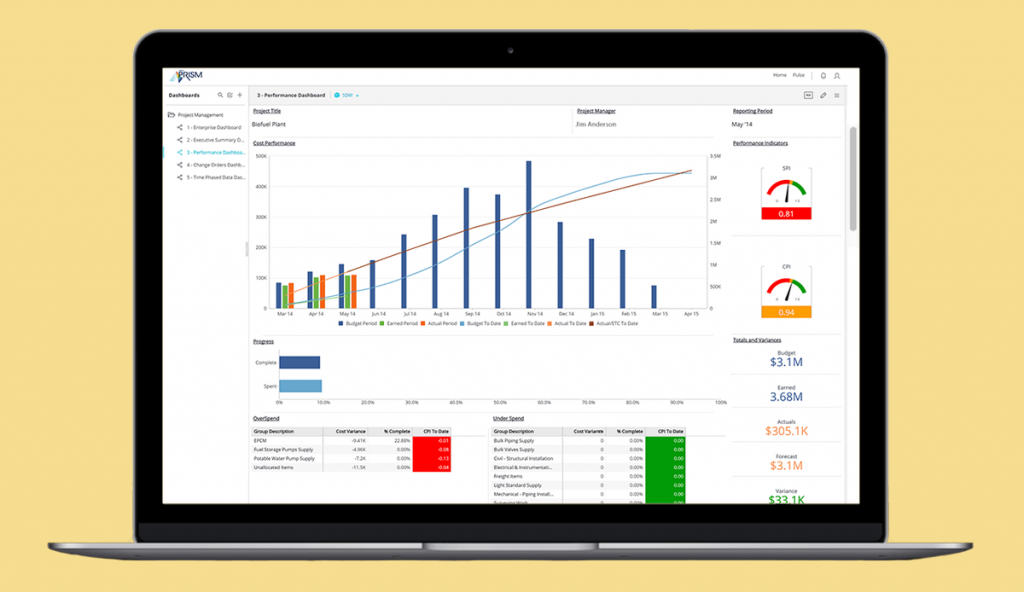ARES PRISM Software review

Project Controls is a vital part of any project, yet often poorly done. ARES PRISM is an off the shelf solution working with organisations across 5 continents to change that.
Running projects and delivering assets on-time and within budget is challenging. Often we see projects reported in the news with delays or budget shortfalls that negatively affect all of those involved; the client who will commission the asset, the primes running the construction delivery and the wider supply chain.
When we examine projects to gain a deeper understanding of what happened it is often not possible to trace the problems back to a source of truth that is robust and reliable. Many organisations struggle to maintain a cohesive description of the life of the project or evidence the underlying rational for the changes to schedule, effort and cost when reviewing the status of the operation.
A big reason is the use of inadequate tools. Excel is commonly deployed for Project Controls. The level of historic record offered by Excel is, frankly, terrible.
Not only is there likely to be poor integration with other aspect of the project, when decisions are made it can be hard or impossible to trace the thinking back to source. For major projects that run over-budget or late this is a disaster.
ARES PRISM aims to solve that. It’s a comprehensive package: including estimation, through project cost management to a powerful dashboarding capability. PRISM underpins the organisational understanding of how the project is performing at the portfolio, project and work package levels.
And above all it’s a superb source of information for decision makers, both in real-time, and in the future, when inquiries are held into why a decision was made. For companies looking to improve Project Controls it could be the ideal package.
What it does
Langridge gave Project Management Today the full tour. In a nutshell, PRISM provides a single, unified platform for managing time, resources and money within a project. PRISM offers complete transparency as to how all calculations are made, how the fundamentals of the project have changed and the earned value measures that help keep the project on track.
“In essence what we do is simple,” begins Langridge. “We empower organisations to understand the current position of the project in terms of progress and cost to date.
“We implement a robust change management process from early warnings through cost and schedule impact assessments and the change approval cycle where we support both electronic and wet signature processes. Using the consolidated information, we forecast the outturn cost to complete the delivery of their project. It’s about understanding where you are and where you are likely to end up.”
The ability of ARES PRISM to offer a historic record of factors involved in a decision needs highlighting. Companies need the ability to trace problems back to the root cause in order to solve them. This eliminates repeat errors. And cuts down on the impact of existing issues.
“We worked on a project a few years ago with an expert in Project Controls,” recalls Langridge. “He was crying out for our software. They used spreadsheets to track and manage cost, change and their interactions with their supply chain, the cost ended up over double the original budget.
“On such a complex job at the cutting edge, the organization needed a better way to manage risk and unforeseen elements (emerging scope) so that they could tell earlier why the costs were overrunning and make faster better decisions about how to course correct. With excel you are dependent on the people or contractors who interpret them rather than relying on centralized system of project data.”
What it’s like to deploy
ARES PRISM is a comprehensive, modular solution, that typically takes an average of 12 weeks to deploy. The company works closely with the client identifying how PRISM will best support the teams delivering their projects. This includes their strategic aims for deploying PRISM and identifying opportunities to delivery benefits as early as possible.
There are many questions to be answered at this point. How does the user generate budgets, develop schedules, who owns the Work Breakdown Structures? How do they allocate costs? How do they break the asset delivery down?
Do we include their finance teams to understand the links to their corporate accounting system? Do they use Oracle, SAP or another system? How do they report progress? Langridge says, “The upside of this work is we deploy PRISM in a few weeks to support the clients’ way of working rather than months of consulting to get the system configured.”
For more information, visit the ARES PRISM website.
Pm today straight to your inbox
subscribe
ARES versus competition
Naturally, ARES PRISM is not the only software package in the Project Controls segment but it is the front runner. Langridge explains that there is a subtle reason why potential clients should take a closer look at ARES.
“We are the only company in the Top 4 that are solely focused on solving project controls problems. It is our specialty. Other solutions are owned by larger organisations who are better known for delivering other solutions such as ERP or Engineering design software. We remain devoted only to the Project Controls space, and you still get the personal touch. You are not just a number to us.”
PRISM is built to be compatible with software in parallel fields. Primavera P6, for example, is commonly used by organizations for scheduling.
PRISM also dovetails with other software packages in fields such as document management, ERP and risk systems. It is designed to be part of a bigger jigsaw, not the sole solution. “This is the way software companies should be,” says Langridge. “Specialists in their field of expertise, collaborating where it adds value to the client. Not a jack of all trades.”
ARES can also call upon some top-class testimonials. Laing O’Rourke is an enthusiastic user. The mining industry is heartland for ARES PRISM: 8 of the top 10 global mining corporations are using it. Sellafield nuclear reprocessing facility too – a place where accountability and certainty are at a premium. And global construction giant AECOM made the leap from Excel and Access to PRISM.
One thing that clients love is that the entire company is behind the product. “Clients get senior stakeholder involvement and support with access to our decision makers and the ability to influence the product roadmap,” says Langridge. “That is unusual, and a selling point for a lot of our clients.”
The company has an alluring story of entrepreneurship behind it. ARES was founded in 1992 as an engineering consultancy in the US. Three years later the team saw a gap in the market for a commercial cost management system, and developed PRISM.
Los Alamos National Lab, famous for developing the atom bomb, funded the development of PRISM and still uses it today. In 2010, PRISM got a total upgrade and was relaunched as PRISM G2 – it’s full name today. “We only have one product at ARES,” says Langridge. “Our sole focus is Project Controls.”
Conclusion
Project Controls is a vital and mandatory part of any project. The bigger the project, the more comprehensive the Project Controls governance tends to be. And clearly, right now too many projects are winging it with Excel or re-purposed software.
ARES PRISM offers a forensic record of how and why decisions were made. In an era of growing transparency, that is going to be a mandatory quality for any well-run project.




